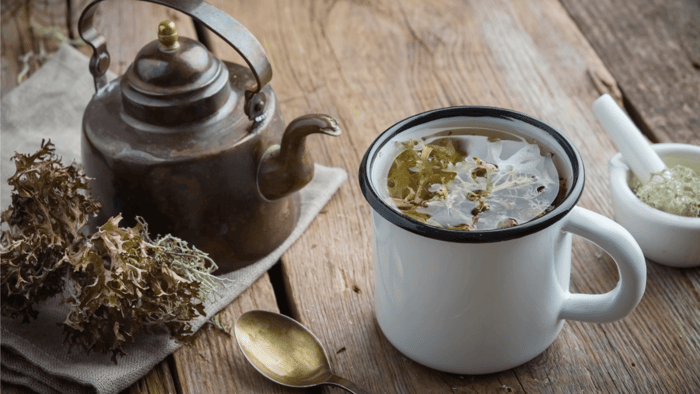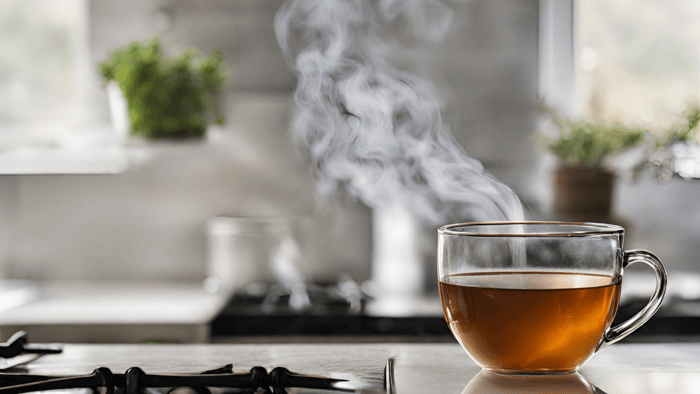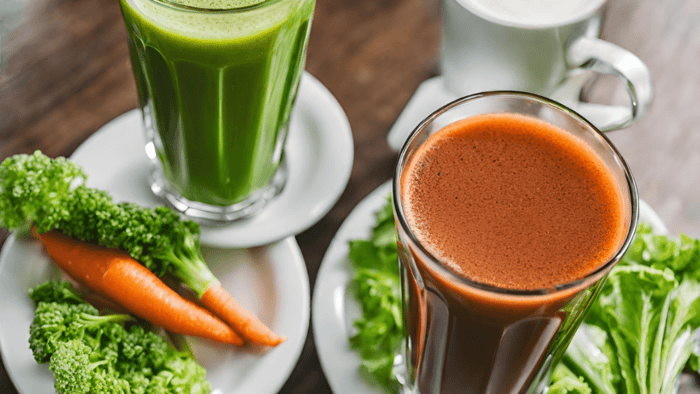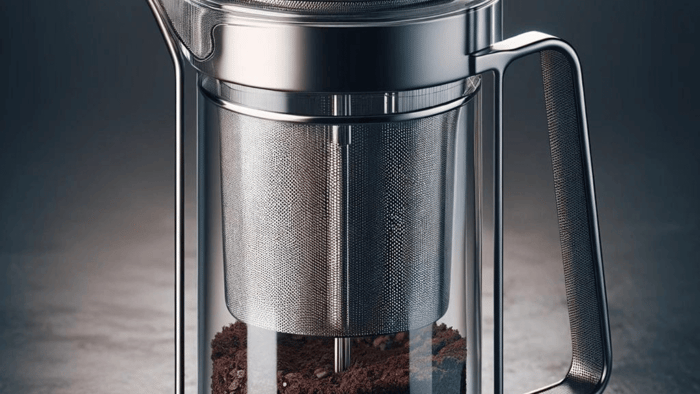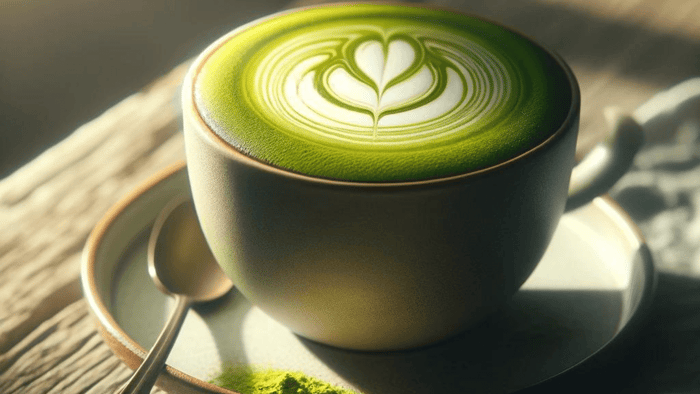Did you know that a simple tea bag could be the key to stopping bleeding after a tooth extraction? This surprising remedy has been used by many people to control bleeding following dental procedures. In this article, we will explore the science behind “why do tea bags stop bleeding” and provide a step-by-step guide on how to use them safely and effectively.
Key Takeaways
-
Tea bags contain natural chemicals, tannins, and caffeine which work together to help form secure blood clots and stop bleeding.
-
Black tea bags are more effective than green tea for controlling bleeding due to their higher tannin concentration.
-
Precautions should be taken when using tea bags as there is a potential risk of allergic reactions or interference with medication. If prolonged or excessive bleeding persists seek medical advice.
The Science Behind Tea Bags and Bleeding Control

Tea bags are a popular household item that can come to your rescue when dealing with bleeding after a tooth extraction or minor oral surgery. The secret to their effectiveness lies in the presence of tannins, caffeine, and blood clotting factors found in tea bags. These components work together to constrict blood vessels, promote clot formation, and accelerate blood coagulation, ultimately helping to control bleeding and support the recovery process.
To fully harness this natural remedy, it’s important to grasp how each component contributes to fully understanding do tea bags stop bleeding. We’ll explore the key ingredients and their roles in bleeding control.
Tannins: The Key Ingredient
Tannins are natural chemicals found in tea, known for their astringent properties. When applied to a bleeding site, tannins constrict blood vessels, which accelerates the clotting process and promotes blood coagulation. This potent ability to constrict blood vessels is attributed to tannins’ capacity for stimulating localized vasoconstriction and smooth muscle contractions. In addition, certain tannin constituents possess a structural similarity to adrenaline and noradrenaline, further contributing to their effectiveness in controlling bleeding after tooth extractions.
The concentration of tannins varies among different types of tea, with black tea generally having the highest tannin concentration and green tea having the lowest. Nevertheless, both black and green tea bags contain tannins that can effectively promote clotting and constrict blood vessels, making them suitable for bleeding control.
Caffeine's Role in Blood Vessel Constriction
Caffeine is another important component found in tea bags that assists in controlling bleeding. This stimulant is known for its vasoconstrictive effect, which narrows blood vessels and restricts blood flow, leading to reduced blood flow and increased peripheral vascular resistance. This constriction of blood vessels further aids in stopping bleeding after tooth extraction or minor oral surgery.
While caffeine’s vasoconstrictive effect can be beneficial for bleeding control, it is important to note that the impact of caffeine on blood vessels may vary depending on whether it is applied topically or ingested. Topical application of caffeine may result in more localized vasoconstriction, while ingestion can have systemic effects such as an increase in blood pressure and peripheral vascular resistance.
In any case, the presence of caffeine in tea bags contributes to their effectiveness in controlling bleeding.
Blood Clotting Factors in Tea
In addition to tannins and caffeine, tea contains blood clotting factors that play a vital role in stopping bleeding. Compounds such as catechins found in green tea have been shown to possess anticoagulant and antiplatelet activity, potentially affecting coagulation factors and fibrinogen levels. However, further research is needed to gain a comprehensive understanding of tea’s impact on blood clotting.
Despite the need for more research, it is clear that tea’s blood clotting factors, along with tannins and caffeine, work together to facilitate the formation of secure blood clots and help stop bleeding. This makes tea bags an effective natural remedy for bleeding control after tooth extractions or minor oral surgeries.
Types of Tea Bags for Effective Bleeding Control
While both black and green tea bags have been shown to be effective in controlling bleeding after wisdom teeth removal, black tea bags are considered more effective due to their higher concentration of tannins.
We’ll next delve into details about these two types of tea bags and the best ways to use them for effective bleeding control.
Black Tea Bags
Black tea bags are rich in tannins and caffeine, which contribute to their effectiveness in stopping bleeding after tooth extractions or minor oral surgeries. The high tannin content in black tea bags, which ranges from 11.76% to 15.14%, helps constrict blood vessels and promote clotting. Research has identified polyphenols and catechins as components in black tea that may aid in blood clotting.
The preparation of black tea bags also has a positive effect on their efficacy in arresting bleeding. The high levels of tannins in black tea possess vasoconstrictive properties, facilitating blood coagulation and clotting, thereby actively arresting bleeding. Black tea bags have proven to be a reliable choice for slowing down bleeding after tooth extractions. This makes them an excellent option for taking control of such a situation.
Green Tea Bags
Green tea bags also contain tannins and can be used to control bleeding after an extraction. The tannins present in green tea bags consist of epigallocatechin gallate (EGCG) and catechins. These tannins serve as vasoconstrictors, constricting blood vessels and reducing bleeding. Additionally, tannins in green tea bags facilitate blood coagulation and accelerate clot formation, which in turn helps control bleeding and support the healing process.
While green tea bags may have a lower tannin content than black tea bags, they can still be effective in controlling bleeding after dental extraction. In fact, some studies suggest that green tea bags may be more effective in promoting clotting than black tea bags.
Step-by-Step Guide: Using Tea Bags to Stop Bleeding
Having explored the science behind tea bags and their role in controlling bleeding, let’s move on to a step-by-step guide on their application to a better understanding of "how do tea bags stop bleeding".
We will guide you on how to prepare the tea bag, the correct way to apply pressure with it, and how to monitor bleeding to adjust treatment accordingly.
Preparing the Tea Bag
To start, you’ll need to properly prepare the tea bag for use in controlling bleeding. The most effective method for moistening a tea bag is to soak it in hot water for approximately 60-90 seconds and then allow it to cool slightly prior to use. This ensures that the tea bag is adequately dampened and ready for application.
When choosing a tea bag, opt for either a black or green tea bag, as both contain tannins that promote blood clotting and help tea bags stop bleeding. Remember to always use a clean, unopened tea bag to ensure that the healing process is not hindered by any contaminants.
Applying Pressure with the Tea Bag
Once the tea bag is prepared, apply it directly to the extraction site and apply gentle pressure. Hold the tea bag in place for up to 30 minutes without disturbing the wound. The tannic acid in the tea bag can help to stop the bleeding and promote clot formation.
It is important to remember that applying pressure is crucial for stopping bleeding. The application of pressure to a bleeding wound assists in stopping the flow of blood by compressing the walls of the blood vessels, which decreases the speed of blood. This enables the body’s natural clotting mechanisms to come into play and form a clot to seal the wound.
Monitoring Bleeding and Adjusting Treatment
Once the tea bag is applied, continuous monitoring of the bleeding and necessary adjustment of treatment is crucial. Keep an eye on the duration and amount of bleeding, any indications of infection, and any unusual symptoms or complications that may arise during the healing process.
If the bleeding continues despite using the tea bag, it may be necessary to seek medical attention or consult with a dentist. Prolonged bleeding could indicate complications such as soft tissue hematomas or excessive blood loss. It is always best to consult with a healthcare professional if you are concerned about your recovery.
Alternatives and Complementary Methods for Post-Extraction Bleeding Control
In some cases, using tea bags alone may not provide sufficient bleeding control. Fortunately, there are alternative and complementary methods available for controlling post-extraction bleeding.
We will examine alternatives for bleeding control such as the use of gauze pads, head elevation, ice application, and over-the-counter medications.
Gauze Pads
Gauze pads can be used alongside tea bags or as an alternative for bleeding control. Some key features of gauze pads include:
-
Made of synthetic fibers such as rayon or polyester, or a blend that may include cotton
-
Highly absorbent
-
Can help control bleeding by applying moderate pressure to the extraction site
To use a gauze pad effectively, follow these steps:
-
Clean the wound with mild soap and water.
-
Apply gentle pressure with a sterile gauze pad or clean cloth to the bleeding area.
-
If the bleeding continues, add another layer or two of gauze pads and continue applying pressure.
Secure the gauze pad in place with adhesive tape or a roller bandage, making sure not to wrap the tape all the way around the injured part to avoid reducing blood flow.
Elevating the Head and Applying Ice
Elevating the head and applying ice can help reduce swelling and bleeding after an extraction. Head elevation reduces blood pressure, which in turn slows down the bleeding. This can be achieved by adding an extra pillow or keeping the head elevated while sleeping. The most beneficial position for head elevation to control bleeding is to elevate the head of the bed to a 30 to 45-degree angle.
Ice application is another effective method for controlling post-extraction bleeding. Here’s how to do it:
-
Apply ice packs to the facial area of extraction for 30-minute intervals.
-
Take a 10-minute break in between each application.
-
Repeat this process during the first 24 hours following surgery.
This helps constrict blood vessels, reducing swelling and bleeding, and providing pain relief by numbing the injured area.
Over-the-Counter Medications
Over-the-counter medications such as ibuprofen (Motrin or Advil) and acetaminophen (Tylenol) may be recommended by a dentist for pain relief and bleeding control following tooth extraction. These medications can help control bleeding by aiding in the formation of a blood clot in the tooth socket and providing pain relief.
It is important to adhere to the instructions provided on the packaging or seek advice from a healthcare professional for proper dosage guidance. Be cautious when taking over-the-counter medications, especially if you are already taking blood thinners or have a bleeding disorder. To ensure safety, consult with a healthcare professional before taking any new medications.
Precautions and Potential Risks
Despite tea bags’ effectiveness in controlling bleeding, certain precautions and potential risks shouldn’t be overlooked. We will address possible allergic reactions, potential medication interference, and the importance of seeking professional help in case of prolonged or excessive bleeding.
Allergic Reactions
It is essential to be aware of potential allergic reactions to tea or its components when using tea bags for bleeding control. Allergic reactions associated with tea consumption may include:
-
Hives
-
Skin itching
-
Eye irritation and tearing
-
Runny nose
-
Sneezing
-
Difficulty breathing
-
Upset stomach
-
Diarrhea
-
Nausea
These allergic reactions can be caused by:
-
Caffeine
-
Tannins
-
Theanine
-
Other phytochemicals found in tea
While tea allergies are infrequent and have only been documented in a few isolated cases, it is important to be cautious and discontinue use if you experience any allergic symptoms.
Interference with Medications
If you are taking medications that may interfere with the effectiveness of a tea bag for bleeding control, it is important to consult with a dentist or doctor. Certain medications, such as anticoagulants like:
-
Coumadin (warfarin)
-
Pradaxa (dabigatran)
-
Xarelto (rivaroxaban)
-
Eliquis (apixaban)
-
Lovenox (enoxaparin)
may interact with the clotting effect of tea bags. Herbal supplements such as Ginkgo biloba may also affect blood clotting.
It is important to be cautious when taking over-the-counter medications, especially if you are already taking blood thinners or have a bleeding disorder. Consult with a healthcare professional for personalized advice regarding the interaction between caffeine, tannins, and blood pressure medication.
Prolonged or Excessive Bleeding
If bleeding continues or worsens despite using tea bags or other methods, it is crucial to seek professional help. Prolonged bleeding could indicate complications such as soft tissue hematomas or excessive blood loss. Consult with a healthcare professional if blood clot forms do not occur or if the bleeding persists for more than 8 to 12 hours.
Monitoring the duration and amount of bleeding, any indications of infection, and any unusual symptoms or complications that may arise during the healing process is essential. Always prioritize your health and safety by seeking professional advice when needed.
Summary
In conclusion, tea bags can be a practical and effective solution for controlling bleeding after tooth extractions or minor oral surgeries. The presence of tannins, caffeine, and blood clotting factors in tea bags work together to constrict blood vessels, promote clot formation, and accelerate blood coagulation. Both black and green tea bags can be used for bleeding control, with black tea bags being the most effective due to their higher tannin concentration. While tea bags can be an efficient home remedy, it is important to be aware of potential risks, such as allergic reactions and medication interactions, and seek professional help if prolonged or excessive bleeding occurs.
Frequently Asked Questions
How long does it take a tea bag to stop bleeding?
Bite down on a warm tea bag for 15 to 30 minutes and the tannic acid in it should help stop the bleeding. Repeat if necessary.
Are tea bags good to stop bleeding?
Tea contains tannins which act as an astringent and stimulate further blood clotting. Green tea extract-impregnated gauze has been found to reduce post-operative bleeding sockets, and a moistened black tea bag can be a very effective substitute for gauze. Biting down on the wet teabag for up to 30 minutes can help stop the bleeding.
How to stop mouth bleeding?
Apply pressure with a clean cloth, rinse with cool water or give your child an ice cube to suck on. Also, press the bleeding site against the teeth or jaw and avoid yawning or laughing. These steps should help stop mouth bleeding.
What other methods can I use to control bleeding after tooth extraction besides tea bags?
Other methods for controlling post-extraction bleeding include using gauze pads, elevating the head, applying ice, and taking over-the-counter medications.
Are there any potential risks or side effects of using tea bags for bleeding control?
Using tea bags for bleeding control carries the risk of allergic reactions, potential interaction with medications, and prolonged bleeding. It is important to be cautious and consider one's health when using this method.
Do away with tedious handheld frothers and clunky shaker bottles. With the Elixir Mixer—our electric whisk bottle—crafting a diverse range of hot and cold drinks is streamlined. Fill it up, press the button, and 15 seconds later—get sipping. It will quickly become the MVP of your everyday rituals.


